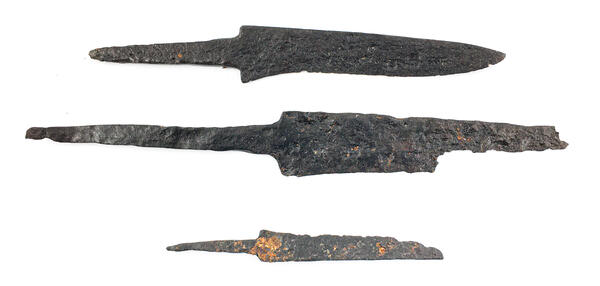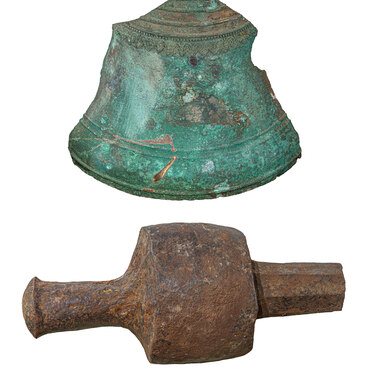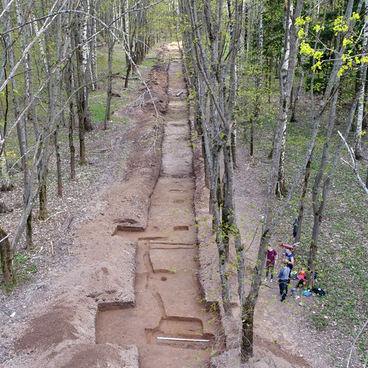In the distant past, a knife was often the only metal object a person possessed. In Kievan Rus, between the 9th century and the 12th century, a knife became an attribute of any free person. Every woman had it on her belt.
Archaeologists distinguish various types of knives. They singled out such categories of knives as kitchen, carpenters’, bone, shoemakers’, and combat. There were also so-called boot knives, that were tucked behind the boot shaft.
All-purpose knives were the most common tools. This is confirmed by the fact that such objects are found during excavations more often than others. For example, during excavations between 2015 and 2017 in Gorokhovets, 58 knife fragments were found.
Scientists noted that, even given the corrosion of metal that stayed under the ground for hundreds of years, the edge or butt of blades often had other defects, and knives were chipped and broken. Those knives were no longer used for their intended purpose even before they were covered by ground. This also hints at the inferior quality of the products made by ancient blacksmiths.
The truth is that, in those days, both expensive knives, that were of high quality, and cheaper ones were produced. Items, housed in the Gorokhovets History and Architecture Museum, served many purposes. During the excavations of the town, archaeologists found neither knives that had an unusual shape or size nor any other tools that had decorative elements.
The outlines of the majority of ancient Russian knives resembled those of the modern ones. The handle could be straight, curved upward or downward, depending on the purpose and personal preferences. At the same time, ancient Russian knives were different in one thing — they were wedge-shaped narrowing toward the edge and the tip.
During excavations in the area, the researchers also found whetstones, that is, sharpening stones, as well as a knife ferrule made of non-ferrous metal. The latter was a metal ring, a narrow band between the handle and the guard, as well as between the handle and the butt. The word for a ferrule in Russian is “oboimitsa”, which comes from the verb “obnyat”, meaning “to hug”. A ferrule served as a means of protecting the handle from splitting upon impact and also was a decoration of a knife.
Archaeologists distinguish various types of knives. They singled out such categories of knives as kitchen, carpenters’, bone, shoemakers’, and combat. There were also so-called boot knives, that were tucked behind the boot shaft.
All-purpose knives were the most common tools. This is confirmed by the fact that such objects are found during excavations more often than others. For example, during excavations between 2015 and 2017 in Gorokhovets, 58 knife fragments were found.
Scientists noted that, even given the corrosion of metal that stayed under the ground for hundreds of years, the edge or butt of blades often had other defects, and knives were chipped and broken. Those knives were no longer used for their intended purpose even before they were covered by ground. This also hints at the inferior quality of the products made by ancient blacksmiths.
The truth is that, in those days, both expensive knives, that were of high quality, and cheaper ones were produced. Items, housed in the Gorokhovets History and Architecture Museum, served many purposes. During the excavations of the town, archaeologists found neither knives that had an unusual shape or size nor any other tools that had decorative elements.
The outlines of the majority of ancient Russian knives resembled those of the modern ones. The handle could be straight, curved upward or downward, depending on the purpose and personal preferences. At the same time, ancient Russian knives were different in one thing — they were wedge-shaped narrowing toward the edge and the tip.
During excavations in the area, the researchers also found whetstones, that is, sharpening stones, as well as a knife ferrule made of non-ferrous metal. The latter was a metal ring, a narrow band between the handle and the guard, as well as between the handle and the butt. The word for a ferrule in Russian is “oboimitsa”, which comes from the verb “obnyat”, meaning “to hug”. A ferrule served as a means of protecting the handle from splitting upon impact and also was a decoration of a knife.



